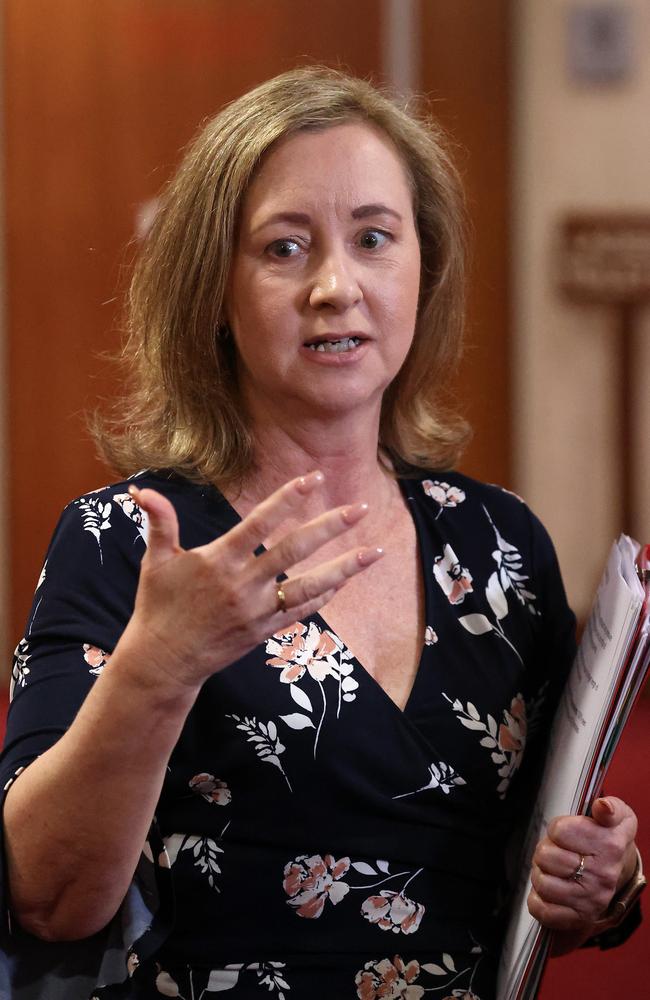New documents reveal more cases of sick Queenslanders waiting hours for ambulances
More cases of patients waiting hours for ambulances or being stuck on the ramp at hospitals have been revealed in new documents that expose the state’s under-pressure health system.
QLD News
Don't miss out on the headlines from QLD News. Followed categories will be added to My News.
More cases of patients waiting hours for ambulances or being stuck on the ramp at hospitals have been laid bare in confronting new documents that expose the state’s under-pressure health system.
A series of 11 “significant incident reviews” from the Queensland Ambulance Service have been released under Right to Information, revealing instances of ambulance ramping stretching for hours at a time.
The internal documents include the case of a male patient on June 16 this year who waited more than eight hours for an ambulance because of significant ramping delays at hospital.
A call for assistance was made to the QAS at 4.47am to attend to the man who had hurt his hip following a fall, but paramedics did not arrive until 2.02pm that afternoon.
The man – who was assisted by the QAS clinical hub while waiting for the ambulance – was taken to Redcliffe Hospital where he was then ramped for more than two hours.

The documents reveal the man died later that day. The documents suggest the more than eight hours it took to assign a crew to the patient was due to “competing pressures of significant hospital ramping delays and subsequent extreme workload”.
In another case, a triple-0 call was made at 8.49pm on June 20 to assist a male patient in South Brisbane who was bleeding – but an ambulance was not assigned until 11.10pm.
This followed multiple calls for help, including in the fourth and final triple-0 call, where – according to the documents – the QAS was advised the patient was “now unconscious and blood everywhere”.
The case was upgraded to a Code 1A at 11.09pm, with an ambulance arriving on scene within five minutes – with the patient taken to the Princess Alexandra Hospital in a serious but stable condition.
The documents reveal that at the time of the first call, there were 20 ambulances ramped at the region’s hospitals for more than 30 minutes – including one at the PA Hospital that had been ramped for 2 hours and 57 minutes.
In another case in Toowoomba on June 26, the QAS was asked at 6.02pm to attend to a man who been suffering from abdominal distension and dysuria since 10am that morning.
The ambulance crew arrived on scene within less than 10 minutes and the male patient was taken to Toowoomba Hospital, where he was triaged and “placed into the hallway due to offloading delays”.
The documents claim the patient was on the stretcher for more than three hours before he was later “transferred to a cubicle in the emergency department”.
He died sometime later that day.
The documents suggest the clinical management of the offloading delay did not contribute to the patient’s death, but it “highlights the systemic issues surrounding lengthy delays”.
And in another case detailed in the documents, it took more than five hours for an ambulance crew to attend to a woman on July 15 who had received a provisional diagnosis of a stroke.

The documents show there were 65.95 hours of lost time at Metro North emergency departments on this day – which equated to 6.5 paramedic crews being unavailable.
In the hour prior to the triple-0 call, there were eight ambulances in the region that had been ramped for more than 30 minutes – with the longest on the ramp for one hour and 25 minutes.
The significant incident review reports were released to the LNP under Right to Information.
QAS Assistant Commissioner David Hartley said the QAS would always prioritise the sickest patients.
He said at the time of the significant review incidents – between April to August this year – the system was under immense pressure amid Covid.
“We want to make sure that we always have an ambulance available to attend to those patients (in the highest Code 1A category),” he said.
“What that means is that when we have a patient who is experiencing a more lower acuity condition, they may wait a little bit longer – but we want to ensure that we’re providing that ambulance response to the most critically ill patient.”
Mr Hartley said those lower acuity patients who were waiting for an ambulance had medical or clinical oversight with a doctor or paramedic in the QAS’s clinical hub.
He said the QAS undertook significant reviews all the time.

“For a small majority of those, we do want to review them to make sure that we’ve done the best we can and the overwhelming majority of those we can put our hand on our heart and say yes we have,” Mr Hartley said.
“Yes, there are some in there that we could’ve done better.”
Opposition health spokeswoman Ros Bates said the documents read like a “war zone novel”.
“The experiences of Queenslanders in these documents are horrifying and expose once again that what the embattled Health Minister is telling Queenslanders publicly is vastly different to the truth,” Ms Bates said.
A Queensland Health spokesman acknowledged the state’s health system was facing “increased pressure”.
“All emergency departments experience surges in ambulance arrivals, and at times, there can be short delays in transferring patients from the ambulance stretcher on to a bed,” he said.
“However, all Category 1 patients (those who are the most sick) continue to be seen within two minutes of presenting at an emergency department.”



